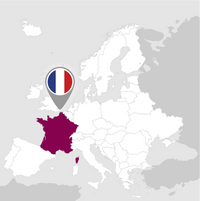Awards
Details

Perfume

Color

Taste
Serve at:
06 - 08 °C.
Longevity:
05 - 10 years

Pairings
- Start up year: 1522
- Bottles produced: 600.000
- Hectares: 20
In 1696, Apvril’s descendants, who were often ‘Royal Mayors’ of Ay, registered the family coat of arms in the Armorial de France. Today, this same coat of arms adorns all the House’s bottles. ?The labels of Philipponnat, vineyard owners and wine merchants, were among the first to bear the signature of sparkling Champagnes as early as the mid-19th century. Read more


| Name | Philipponnat Champagne Reserve Rosè Brut |
|---|---|
| Type | Rosé classic method sparkling wine brut |
| Denomination | Champagne AOC |
| Size | 0,75 l |
| Alcohol content | 12.5% by volume |
| Grape varieties | 69% Pinot Nero, 29% Chardonnay, 2% Pinot Meunier |
| Country | France |
| Region | Champagne region |
| Vendor | Philipponnat |
| Origin | Mareuil-sur-Aÿ. |
| Wine making | Malolactic fermentation is systematically sought after, except for a fraction of wines which are fermented in wooden casks. The red Pinot Noir is made from "free-run" juice, macerated for 12 to 14 days and used in light proportions (7 to 8 %) in order to obtain a delicately coloured rosé, but one with character and distinctive taste. The dosage is kept small (9 grams/litre) in order to preserve a harmonious balance of dryness, freshness and fruitiness. |
| Aging | Around 3 years on the yeast, much longer than the 15 months legal minimum. All wines are given three months between disgorgement and shipping. Each bottle bears its disgorgement date on its back label. |
| Allergens | Contains sulphites |





